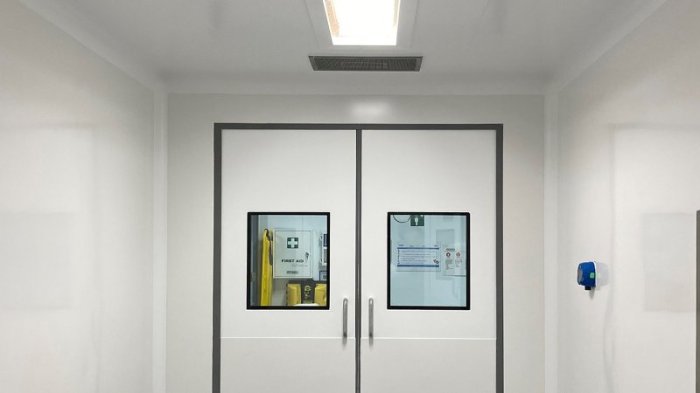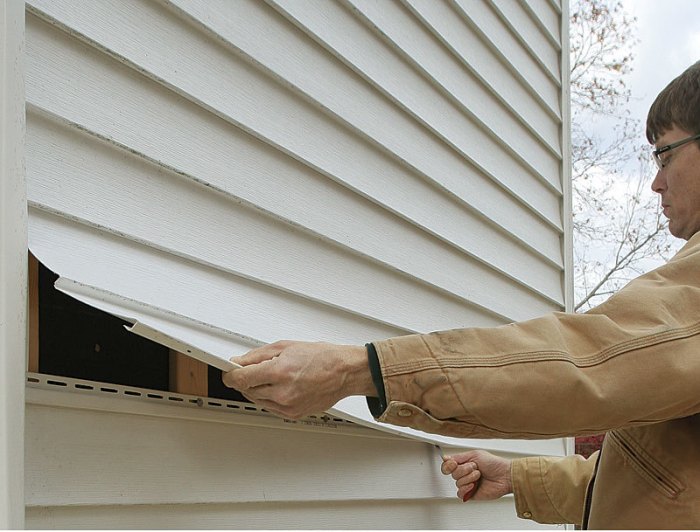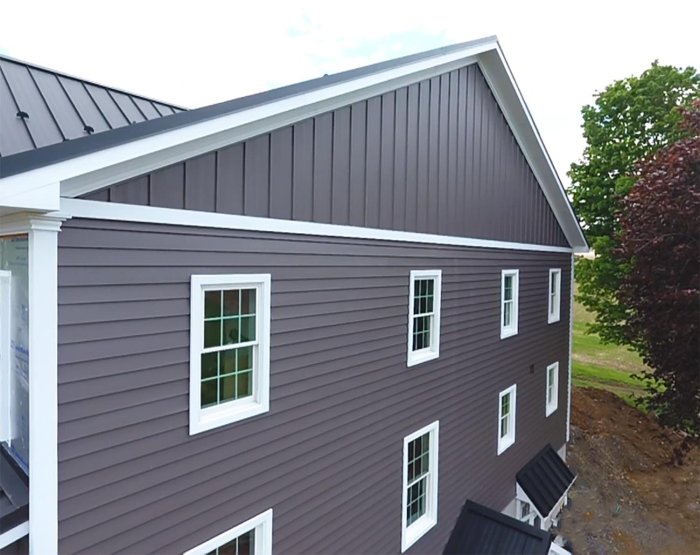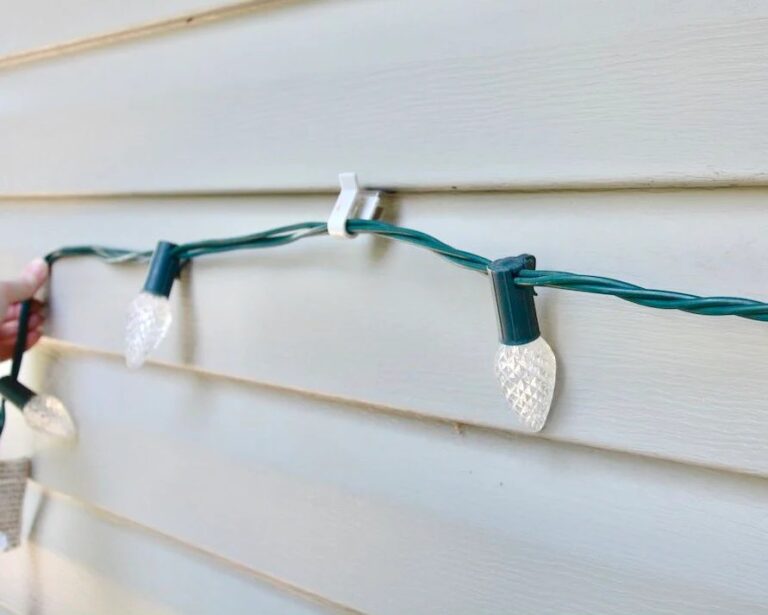How Much Does Clapboard Siding Cost?
Material Costs
How much does clapboard siding cost – The cost of clapboard siding varies significantly depending on the type of wood, its quality, and whether it’s pre-primed. Understanding these cost factors is crucial for accurate budgeting during a home renovation or new construction project. This section provides a breakdown of material costs to help you estimate the expenses involved.
Wood Type and Quality
Different wood types offer varying levels of durability, aesthetics, and, consequently, price. Cedar, pine, and redwood are popular choices, each with a unique price range reflecting its inherent properties and quality grades. Higher grades generally exhibit fewer knots, more consistent color, and superior resistance to rot and insect damage.
| Material | Cost per sq ft (low) | Cost per sq ft (high) | Notes |
|---|---|---|---|
| Cedar | $4.00 | $8.00 | Prices vary based on species (e.g., Western Red Cedar is often more expensive than Eastern White Cedar) and grade. |
| Pine | $2.50 | $5.00 | Cost depends on the species (e.g., Southern Yellow Pine) and grade; knotty pine is generally less expensive. |
| Redwood | $5.00 | $10.00 | Known for its durability and resistance to decay, making it a premium option. |
Pre-Primed vs. Unprimed Clapboard
Pre-primed clapboard siding comes with a factory-applied primer, saving time and labor on the painting process. However, this convenience typically translates to a higher initial cost. Unprimed clapboard requires separate priming and painting, adding to the overall project expense, but potentially offering greater flexibility in color choices.
The price difference between pre-primed and unprimed siding can range from $0.50 to $2.00 per square foot, depending on the wood type and primer quality.
Fasteners, Flashing, and Other Materials
Beyond the clapboard itself, several other materials contribute to the overall project cost. These include:* Fasteners:Galvanized nails or screws specifically designed for exterior applications are essential. Costs vary based on quantity and type. Expect to budget approximately $0.10$0.20 per square foot.
Flashing
This waterproof material protects vulnerable areas like window and door frames, corners, and valleys. The cost depends on the type and amount needed, typically ranging from $0.25 to $1.00 per linear foot.
Caulk and Sealants
Used to seal gaps and ensure watertightness, these materials add a relatively small cost to the overall project, but are crucial for longevity. A small tube can cost anywhere from $5 to $20.
Underlayment
This layer is often installed beneath the siding to provide additional protection against moisture and air infiltration. Costs vary significantly based on material and thickness.
Total Cost per Square Foot (Including Installation)
The following table provides estimates for the total cost per square foot, including both materials and installation. Installation costs are highly variable and depend on factors such as labor rates, project complexity, and geographic location. These figures should be considered rough estimates.
| Material | Cost per sq ft (low) | Cost per sq ft (high) | Notes |
|---|---|---|---|
| Cedar (Installed) | $10.00 | $18.00 | Includes materials and labor; price varies significantly based on installer and location. |
| Pine (Installed) | $7.50 | $13.00 | Includes materials and labor; price varies significantly based on installer and location. |
| Redwood (Installed) | $12.00 | $22.00 | Includes materials and labor; price varies significantly based on installer and location. |
Labor Costs
Labor costs represent a significant portion of the overall expense when installing clapboard siding. Understanding these costs, which vary based on several factors, is crucial for accurate budgeting. This section will detail the various elements influencing labor expenses and provide estimates to aid in your planning.Experienced siding installers’ hourly or daily rates fluctuate considerably depending on geographic location, demand, and the installer’s experience and reputation.
Generally, you can expect higher rates in densely populated areas with a high cost of living, such as major metropolitan centers on the East and West Coasts, compared to more rural areas. Highly skilled and experienced installers with proven track records and positive reviews will naturally command higher fees than less experienced individuals.
Daily rates often range from $300 to $800, while hourly rates can vary between $50 and $150. These are broad estimates, and it’s essential to obtain multiple quotes from local contractors to get a precise understanding of labor costs in your specific region.
Factors Influencing Labor Costs, How much does clapboard siding cost
Several factors beyond simple location and experience significantly impact the final labor cost. Project complexity, accessibility of the work site, and prevailing weather conditions all play a substantial role. Intricate designs, requiring more precise cuts and detailed work, will naturally increase labor time and expense.
Difficult-to-access areas, such as steep slopes or multi-story buildings, also demand additional time and effort, leading to higher costs. Adverse weather conditions, like heavy rain or extreme temperatures, can cause delays and potentially increase the overall labor expense due to the need for rescheduling or additional protective measures.
For example, a project requiring significant scaffolding due to height, or one involving intricate trim work around numerous windows and dormers, will cost considerably more than a simple, flat-surface installation on a single-story home.
Estimated Labor Costs for Different Sized Projects
The following table provides estimated labor costs for small, medium, and large siding projects. These are rough estimates, and actual costs will vary depending on the factors discussed above.
| Project Size (sq ft) | Labor Cost (low) | Labor Cost (high) | Notes |
|---|---|---|---|
| 500-1000 | $1,500
|
$3,000
|
Small projects, simple designs, easy access. |
| 1000-2000 | $3,000
|
$6,000
|
Medium projects, moderate complexity, typical access. |
| 2000+ | $6,000
|
$12,000
|
Large projects, complex designs, potential access challenges. |
Professional Contractor vs. DIY Installation
Hiring a professional contractor offers several advantages, including expertise, efficiency, warranty protection, and often a faster completion time. However, it comes at a higher cost encompassing both materials and labor. DIY installation, while potentially saving on labor costs, requires significant time, skill, and the purchase of specialized tools.
A homeowner undertaking a DIY project must accurately assess their skills and available time. Improper installation can lead to costly repairs down the line, potentially negating any initial savings. For example, a homeowner attempting a complex siding project without sufficient experience might spend more time and money on materials due to mistakes and need to purchase extra materials, than if they had hired a professional.
A realistic assessment of your capabilities and a comparison of the total cost, including potential repair expenses, is crucial before opting for a DIY approach.
Project Size and Complexity
The overall cost of clapboard siding installation is significantly influenced by the project’s size and complexity. Larger projects naturally require more materials and labor, leading to higher expenses. However, complexity adds another layer of cost beyond simple square footage calculations.
Intricate designs, difficult access points, and the need for pre-existing condition remediation all contribute to a higher final price.The total square footage directly impacts material costs. More siding means more lumber, nails, and other associated materials. Labor costs also increase proportionally, as more time and effort are needed for larger projects.
For example, a 1,500 square foot house will require substantially more materials and labor than a 500 square foot shed, resulting in a considerably higher overall cost. This relationship is generally linear, though unexpected issues can introduce non-linear cost increases.
Additional Costs Associated with Complex Projects
Complex projects often involve factors that drive up costs beyond the basic material and labor calculations for simple square footage. These factors include intricate designs requiring specialized cuts and fitting, difficult-to-access areas demanding additional scaffolding or specialized equipment, and the need for significant repairs to underlying structures.
Cost Increases Related to Pre-Existing Conditions
Removing existing siding adds considerable time and labor to the project. The removal process itself is labor-intensive, and disposal of the old siding adds to the overall cost. Furthermore, the removal often reveals underlying issues with the sheathing, such as rot or damage, requiring additional repairs before new siding can be installed.
Repairing the sheathing can significantly increase the project’s duration and cost, sometimes exceeding the cost of the siding itself. For instance, discovering extensive water damage behind the old siding might necessitate replacing significant portions of the house’s sheathing, adding thousands of dollars to the project.
Unusual architectural features, such as dormers, bay windows, or complex rooflines, also add to the complexity and cost of installation, requiring more precise cuts and potentially custom-fabricated pieces.
Factors Increasing Project Complexity and Their Corresponding Cost Implications
The following list details factors that can increase the complexity of a clapboard siding project and their associated cost implications. It’s crucial to consider these elements during the initial planning stages to get an accurate cost estimate.
| Factor | Cost Implications | Example |
|---|---|---|
| Intricate Design | Increased labor costs due to specialized cuts and fitting; potential need for custom-fabricated pieces. | A house with many angles, curves, and decorative elements. |
| Difficult-to-Access Areas | Increased labor costs due to the need for scaffolding, specialized equipment, or extra safety measures. | A multi-story house with steep slopes or limited access points. |
| Removal of Existing Siding | Increased labor and disposal costs; potential discovery of underlying damage requiring additional repairs. | Removing old asbestos siding requiring specialized handling and disposal. |
| Underlying Sheathing Repair | Increased material and labor costs for repairing or replacing damaged sheathing. | Discovering rotted wood requiring extensive replacement before new siding can be installed. |
| Unusual Architectural Features | Increased material and labor costs due to the need for custom-fabricated pieces and specialized installation techniques. | A house with multiple dormers, bay windows, or a complex roofline. |
Regional Variations
The cost of clapboard siding installation varies significantly across the United States, influenced by a complex interplay of factors beyond material and labor costs. Geographic location plays a crucial role in determining the overall project expense, impacting material availability, labor rates, and even regulatory requirements.Geographic location significantly affects both material and labor costs for clapboard siding projects.
Transportation costs for materials, particularly lumber, can be substantial, leading to higher prices in remote areas or regions with limited access to major suppliers. Similarly, labor rates fluctuate regionally due to variations in the cost of living, unionization, and the overall demand for skilled construction workers.
Areas with a high cost of living, such as major metropolitan centers on the coasts, typically command higher labor rates compared to more rural or less populated regions.
Regional Differences in Building Codes and Permit Fees
Building codes and permit fees differ substantially from state to state and even between municipalities within the same state. Stricter codes, often found in areas prone to severe weather events like hurricanes or wildfires, may necessitate the use of more expensive, higher-quality materials, increasing the overall project cost.
Similarly, permit fees vary considerably based on the project’s size, complexity, and the local government’s fee structure. For instance, a coastal city might have stricter building codes and higher permit fees than a rural town in the Midwest, impacting the overall cost of a clapboard siding project.
A project requiring specialized permits due to historical preservation requirements in a specific area will also add to the overall cost.
Impact of Local Material Availability on Pricing
The availability of materials locally impacts pricing significantly. Regions with abundant local timber resources might experience lower material costs compared to areas where materials must be transported over long distances. For example, a project in the Pacific Northwest, known for its lumber production, may benefit from lower wood costs compared to a similar project in the Southeast, which might rely on imported lumber.
Conversely, a region with limited access to specific types of clapboard siding might see inflated prices due to increased transportation and supply chain constraints. This directly influences the final cost of the project.
Cost Comparison of Clapboard Siding in Three Regions
To illustrate regional variations, let’s compare the cost of clapboard siding installation in three distinct areas: the Northeast, the South, and the West. These regions exhibit differences in material costs, labor rates, and regulatory environments.
Consider a hypothetical 1,500 square foot home requiring clapboard siding installation. A rough estimate, excluding foundation and other significant factors, might show:
| Region | Estimated Material Cost | Estimated Labor Cost | Estimated Total Cost |
|---|---|---|---|
| Northeast (e.g., New England) | $8,000
|
$10,000
|
$18,000
|
| South (e.g., Georgia) | $7,000
|
$8,000
|
$15,000
|
| West (e.g., California) | $9,000
|
$12,000
|
$21,000
|
These are broad estimates and actual costs can vary widely depending on specific project details and local market conditions. The significant cost difference between the regions illustrates the impact of regional variations on the final price.
Additional Costs
Beyond the material and labor costs directly associated with clapboard siding installation, several additional expenses can significantly impact your project budget. Careful planning and budgeting for these unforeseen elements are crucial to avoid financial surprises during or after the project’s completion.
Failing to account for these can lead to project delays and cost overruns.
Permitting and Inspection Fees
Securing the necessary permits and undergoing inspections is a mandatory step in most jurisdictions before, during, and after siding installation. Permitting fees vary widely depending on location, project scope, and the specific requirements of your local building department. For instance, a smaller project in a rural area might incur fees ranging from $100 to $500, while a larger project in a city with stricter regulations could cost several thousand dollars.
Inspection fees are typically charged for each inspection stage, covering aspects like foundation preparation, installation progress, and final completion. These fees can range from $50 to $200 per inspection, depending on the complexity and the number of inspections required.
It’s advisable to contact your local building department early in the planning phase to obtain a precise estimate of permit and inspection costs.
Disposal of Old Siding Materials
Removing existing siding adds to the overall project cost. Disposal fees depend on the type and quantity of material being removed. Asbestos-containing siding requires specialized and more expensive disposal methods, often involving licensed contractors and hazardous waste facilities.
The cost can range from a few hundred dollars for a small quantity of non-hazardous materials to several thousand dollars for larger projects involving hazardous materials. Recycling options might reduce costs, but this depends on local recycling programs and the availability of facilities that accept the specific type of siding being removed.
Always check local regulations regarding waste disposal and obtain quotes from waste removal companies before starting the demolition phase.
Painting or Staining Costs
Painting or staining new clapboard siding significantly adds to the overall expense. The cost depends on the size of the area, the number of coats required, the type and quality of paint or stain used, and the labor involved.
A simple paint job might cost between $1.50 and $4.00 per square foot, while staining can range from $2.00 to $6.00 per square foot. Higher-end paints and stains, requiring more skilled labor, naturally increase the cost. For example, a 1,000 square foot house requiring two coats of premium paint could easily cost $3,000 to $8,000 for labor and materials.
This cost should be factored into the budget from the outset.
Unexpected Costs and Contingency Planning
Unforeseen issues are inherent in any construction project. These might include discovering rotted wood requiring extensive repairs, encountering unexpected structural problems beneath the siding, or facing delays due to inclement weather. A 10-20% contingency budget is generally recommended to cover such unexpected expenses.
For example, on a $10,000 siding project, allocating $1,000 to $2,000 as a contingency fund provides a buffer for handling these unforeseen complications. Regular communication with the contractor and careful monitoring of the project’s progress help identify potential problems early, minimizing their overall impact on the budget.
Detailed documentation of all changes and additional expenses ensures transparency and facilitates accurate cost tracking throughout the project.
Visual Examples
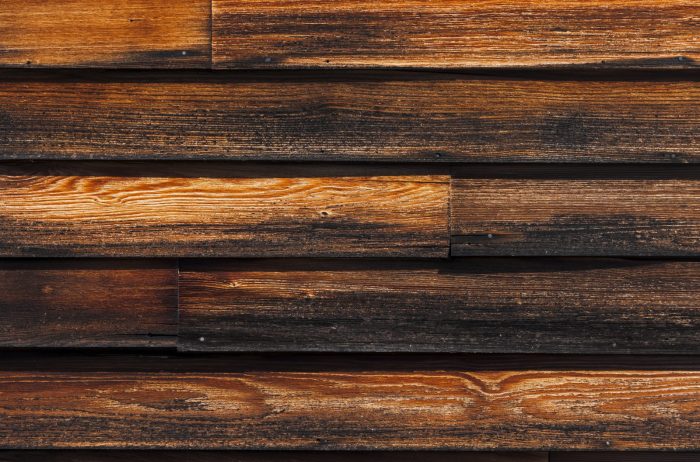
Choosing the right clapboard siding involves careful consideration of aesthetics as much as cost. The visual appeal of your home’s exterior will be significantly impacted by the type of wood and the installation method chosen. Understanding the visual differences between high-quality and lower-cost options, as well as the impact of installation techniques, is crucial for making an informed decision.High-quality cedar and more economical pine offer distinct visual characteristics.
These differences influence the overall look and feel of the finished product, directly reflecting the investment made.
Cedar Clapboard Siding Appearance
High-quality cedar clapboard siding boasts a rich and varied appearance. The texture is typically smooth but with a subtle, natural grain that adds depth and visual interest. Color variations are common, ranging from light, reddish-brown tones to deeper, almost mahogany hues.
The grain patterns themselves are often prominent, showcasing the natural beauty of the wood. Individual boards exhibit a unique character, with subtle knots and variations in color adding to the overall rustic charm. This natural variation is a hallmark of high-quality cedar and contributes to its premium aesthetic.
The overall effect is one of warmth, sophistication, and natural elegance. Over time, cedar weathers beautifully, developing a silvery-gray patina that adds to its character.
Pine Clapboard Siding Appearance
Pine clapboard siding presents a more uniform appearance compared to cedar. The texture is generally smoother, with less pronounced grain patterns. Color variations are less dramatic, typically falling within a range of light to medium yellows and browns. Knots may be more prevalent than in higher-grade cedar, and the overall appearance can be slightly less refined.
While pine offers a more budget-friendly option, it still provides a clean and acceptable aesthetic, particularly when stained or painted to achieve a desired color and consistency. The lack of significant color variation and the less pronounced grain make pine a good choice for those seeking a more uniform and less rustic look.
Visual Impact of Different Siding Installation Techniques
The installation method significantly impacts the final visual result. Horizontal installation, the most common method, creates a classic and traditional look, emphasizing the horizontal lines of the house. Vertical installation, while less common, offers a modern and contemporary feel, drawing the eye upward and creating a sense of height.
Overlapping clapboards, the standard method, creates a layered effect that adds depth and texture. The width of the overlap can subtly influence the visual pattern, with wider overlaps creating a more pronounced shadow line. Precise and even overlapping is crucial for a professional and visually appealing finish; uneven overlapping can detract from the overall aesthetic.
A skilled installer will ensure consistent spacing and alignment for a clean, finished appearance.
Conclusive Thoughts: How Much Does Clapboard Siding Cost
Ultimately, the cost of clapboard siding is a multifaceted calculation. While a simple per-square-foot estimate provides a starting point, the true cost reflects a complex interplay of material selection, labor expenses, project size, and regional factors. By carefully considering each element, homeowners can accurately assess the financial implications and make informed choices that align with their budget and aesthetic preferences.
Remember to factor in unexpected costs and obtain multiple quotes from reputable contractors to ensure a successful and cost-effective project.
